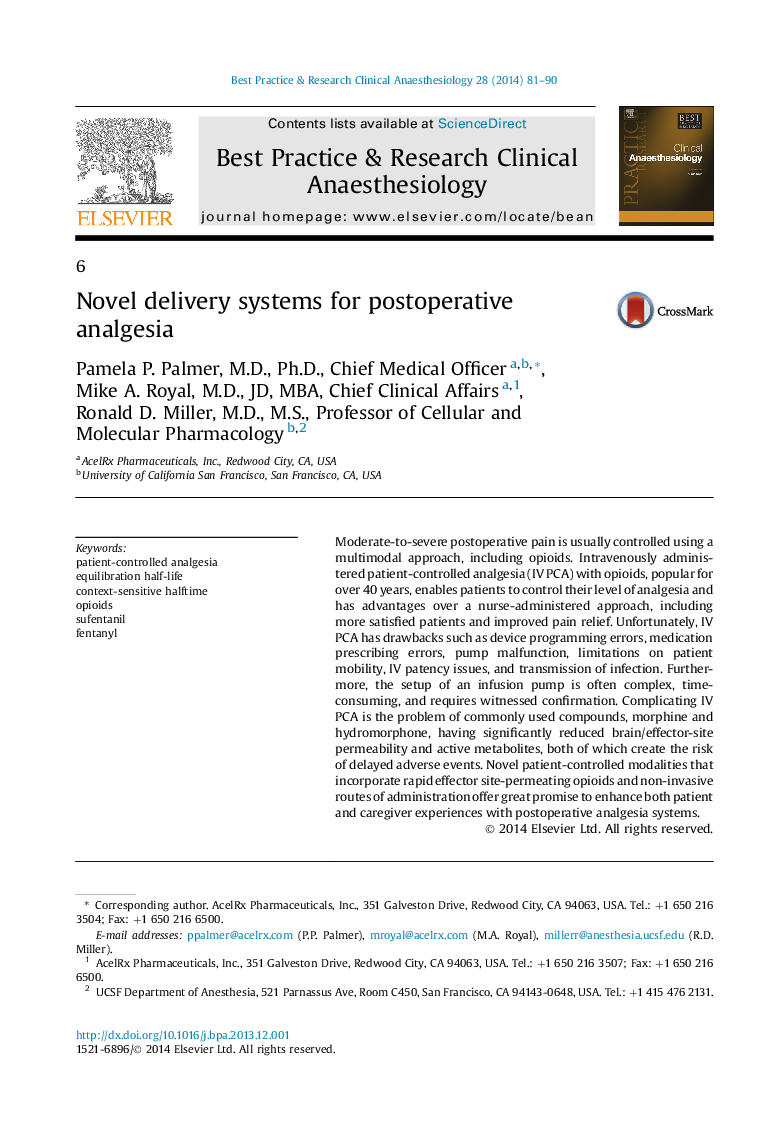| Article ID | Journal | Published Year | Pages | File Type |
|---|---|---|---|---|
| 2748510 | Best Practice & Research Clinical Anaesthesiology | 2014 | 10 Pages |
Moderate-to-severe postoperative pain is usually controlled using a multimodal approach, including opioids. Intravenously administered patient-controlled analgesia (IV PCA) with opioids, popular for over 40 years, enables patients to control their level of analgesia and has advantages over a nurse-administered approach, including more satisfied patients and improved pain relief. Unfortunately, IV PCA has drawbacks such as device programming errors, medication prescribing errors, pump malfunction, limitations on patient mobility, IV patency issues, and transmission of infection. Furthermore, the setup of an infusion pump is often complex, time-consuming, and requires witnessed confirmation. Complicating IV PCA is the problem of commonly used compounds, morphine and hydromorphone, having significantly reduced brain/effector-site permeability and active metabolites, both of which create the risk of delayed adverse events. Novel patient-controlled modalities that incorporate rapid effector site-permeating opioids and non-invasive routes of administration offer great promise to enhance both patient and caregiver experiences with postoperative analgesia systems.
